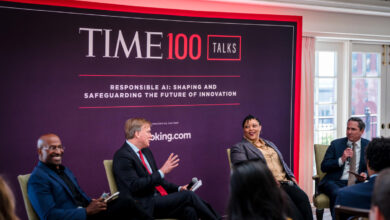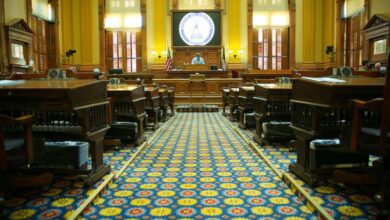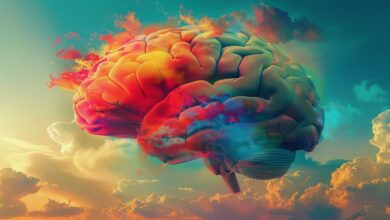Artificial Intelligence And Inflation: A Volatile Relationship

Robot and Coins
Artificial intelligence will likely improve productivity—output relative to inputs such as labor, energy and materials. We expect to see lower prices where AI provides the biggest boost to productivity. That could have a general effect on the price level, pulling the rate of inflation down for the entire economy, and conceivably triggering deflation. But the actual path is not certain.
The key issue for prices overall is the increase in supply relative to increases in demand. Milton Friedman’s famous statement refers to the money supply but applies even to theories that see stimulus coming from fiscal policy: “Inflation is always and everywhere a monetary phenomenon, in the sense that it is and can be produced only by a more rapid increase in the quantity of money than in output.”
So if AI boosts output beyond the increase in money supply (or other measure of stimulus), inflation will slow, potentially to the point of falling prices—deflation.
The supply side comes first to mind with AI. A team from the creators of ChatGPT, OpenAI, concluded, “… around 80% of the U.S. workforce could have at least 10% of their work tasks affected by the introduction of LLMs [large language models], while approximately 19% of workers may see at least 50% of their tasks impacted.” Less labor needed per unit of output means falling costs. In competitive sectors, falling costs lead to falling prices, all other things being equal.
AI won’t help lower costs across the board. AI will have only small or negligible effects in hands-on fields such as construction. Some sectors that could benefit will be slow to adopt AI due to legal or regulatory limitations. But the supply of goods and services should increase substantially.
Aggregate demand has already been stimulated by AI. Part of the recent computer chip building boom derives from the need for more processors for AI. The chips are needed for the training runs, which take massive numbers of chips operating round the clock for months. After that, getting answers from the AI models requires major data centers filled with chips. We’ll also need more electricity production and transmission lines to power the data centers.
Businesses may find that implementation of AI will require different capital than they currently have. A fast-food ordering system based on voice recognition with AI may not cost much more than an old cashier-based system, but the equipment will be different. Throwing out the old and installing the new will stimulate economic activity.
Capital spending, John Maynard Keynes argued, was prone to waves of optimism and pessimism, leading to business cycles. More recently, Finn Kydland and Edward Prescott won Nobel Prizes in economics for their statistical analysis that concluded business cycles were often triggered by waves of productivity changes.
Also on the demand side, new products could possibly trigger increased consumer demand. Right now the examples seem trivial and unimportant, but that could change as clever minds put new ideas into practice.
At this point in the analysis, AI will likely stimulate total supply in the economy a great deal, and total demand somewhat. The net effect appears to be dominated by factors that will lower prices.
Recall, however, Friedman’s statement about stimulus being considered relative to output growth. If economic policy-makers perfectly anticipate changes in productivity and demand caused by AI, they will keep inflation right at the two-percent target. If they are slow to recognize the productivity improvements brought to us by AI, then inflation will dip, and potentially turn down into deflation. However, if policy-makers go overboard in their expectations for productivity improvement, they will add too much stimulus to the economy, resulting in greater inflation.
In the last three years fiscal policy—government spending and taxation—has not been used to stabilize the economy. Congress and the president passed spending bills that resulted in huge deficits despite good economic growth. Keeping the economy on path has been the Federal Reserve’s job. So the question to consider is whether the Fed can accurately anticipate the effects of artificial intelligence with one-to-three-year time horizons.
The Federal Reserve Board in Washington DC employes 400 Ph.D. economists. The 12 regional Federal Reserve Banks each employ a smaller number of economists, plus they engage academics to assist with their research programs. Despite this plethora of talent, the task of assessing the impact of AI over a short time horizon will overwhelm their capabilities. Companies today do not know how they will implement AI tools. For precedents, economists study the industrial revolution, the expansion of electricity and the early days of computers—which means we only have a coarse understanding of how changes will evolve, when we need fine-tuning capability.
We should thus expect wide swings in inflation. My guess is that the Fed will wait to add stimulus until we clearly see productivity gains lowering prices, then they will jump in with stimulus. After that, the Fed will try to gauge the productivity gains based on very recent experience, missing the inevitable upturns and slowdowns in AI usage and benefits. This is not to blame the Fed. The job is simply too big for anyone.
Businesses, consumers and investors should expect a wild ride. Flexibility is the key. Big bets may win in the long run, but only if the bettors can hold their positions during setbacks.



